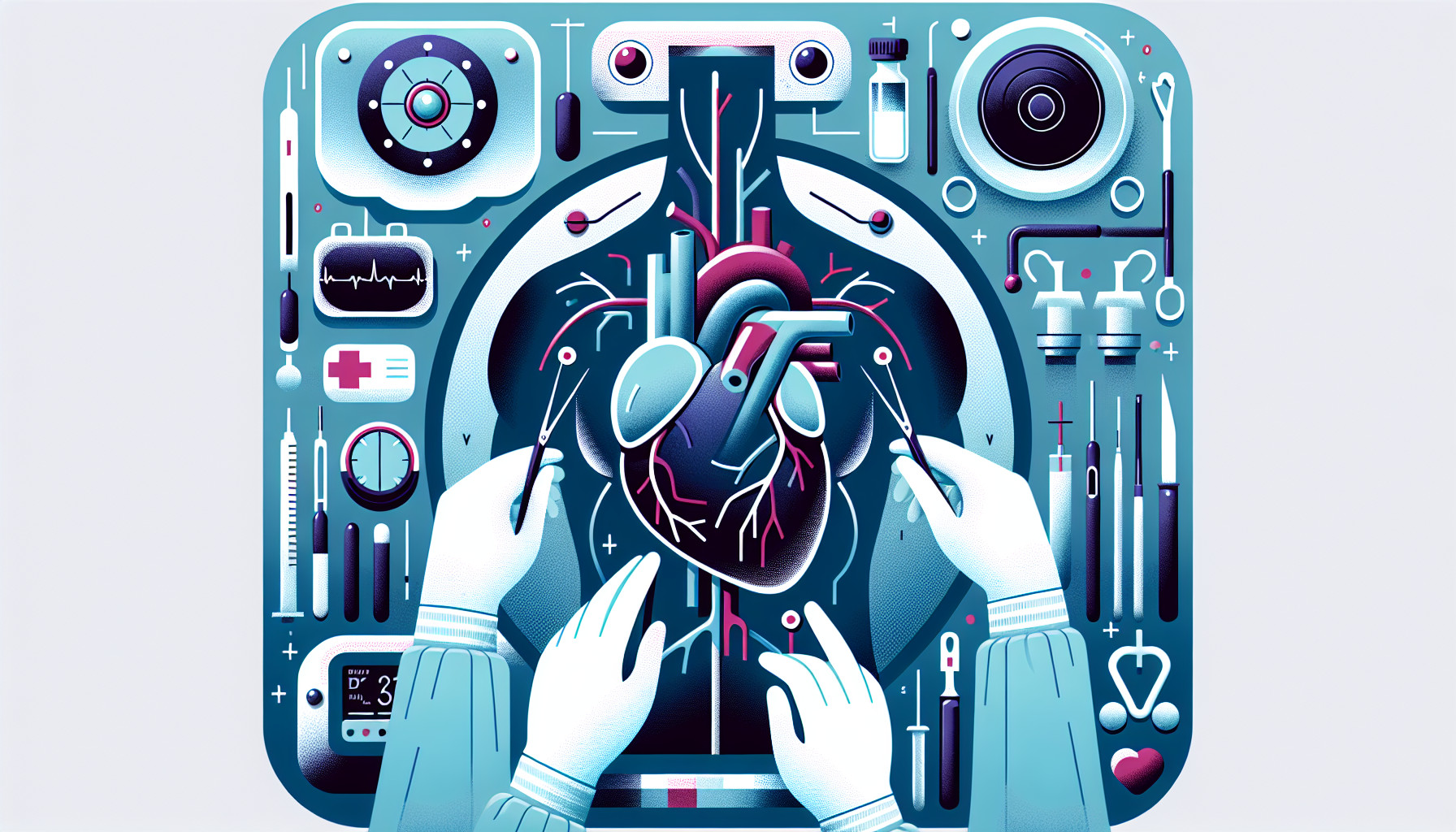Our Summary
This research paper discusses a new surgical technique that allows doctors to repair or replace the mitral valve in the heart while also performing coronary revascularization (a procedure to improve blood flow to the heart) through a small incision in the front left side of the chest. This technique is unique and valuable because it combines two heart procedures in a less invasive way than traditional surgery. The paper suggests that this is a promising approach that could be of interest to heart surgeons.
FAQs
- What is the new surgical technique discussed in the research paper?
- How does this new surgical technique differ from traditional surgery?
- Why is this new technique of combining the repair or replacement of the mitral valve and coronary revascularization considered promising?
Doctor’s Tip
One helpful tip a doctor might tell a patient about coronary artery bypass is to follow a healthy lifestyle after the surgery. This includes maintaining a balanced diet, regular exercise, quitting smoking, managing stress, and taking prescribed medications as instructed. These lifestyle changes can help improve overall heart health and reduce the likelihood of future heart issues.
Suitable For
Patients who are typically recommended for coronary artery bypass surgery are those who have severe coronary artery disease that is not responding well to medications or other non-invasive treatments. This may include individuals with significant blockages in their coronary arteries, which can lead to chest pain (angina), shortness of breath, and an increased risk of heart attack.
In addition, patients who have already undergone multiple interventions such as angioplasty and stenting, but continue to have persistent symptoms or complications, may also be candidates for coronary artery bypass surgery. Other factors that may influence a doctor’s recommendation for this procedure include the patient’s overall health, age, and the presence of other medical conditions such as diabetes or kidney disease.
It is important for patients to discuss their individual case with their healthcare provider to determine if coronary artery bypass surgery is the best treatment option for them. This new surgical technique discussed in the research paper may offer an alternative for some patients who require both mitral valve repair or replacement and coronary revascularization.
Timeline
- Before coronary artery bypass surgery:
- Patient undergoes a series of diagnostic tests such as angiography, stress tests, and blood tests to assess the severity of coronary artery disease.
- Patient may be prescribed medications to manage symptoms and reduce the risk of complications.
- Patient may undergo lifestyle changes such as diet and exercise modifications to improve heart health.
- Patient may receive counseling and education about the surgery and post-operative care.
- During coronary artery bypass surgery:
- Patient is placed under general anesthesia.
- Surgeon makes an incision in the chest to access the heart.
- Surgeon uses blood vessels from another part of the body (such as the leg or chest) to bypass blocked or narrowed coronary arteries.
- Surgery typically takes several hours to complete.
- After coronary artery bypass surgery:
- Patient is transferred to the intensive care unit for monitoring and recovery.
- Patient may experience pain, fatigue, and difficulty breathing in the days following surgery.
- Patient undergoes physical therapy to regain strength and mobility.
- Patient may need to take medications to manage pain, prevent infection, and reduce the risk of blood clots.
- Patient attends follow-up appointments with their healthcare team to monitor recovery and assess long-term outcomes.
What to Ask Your Doctor
- Can I undergo this combined procedure instead of traditional coronary artery bypass surgery?
- What are the risks and benefits of this new surgical technique compared to traditional surgery?
- How long is the recovery time for this combined procedure?
- What are the success rates of this new technique in improving heart function and reducing symptoms?
- Are there any specific criteria or factors that make me a good candidate for this combined procedure?
- How experienced are you in performing this new surgical technique?
- What post-operative care and follow-up will be necessary after undergoing this combined procedure?
- Are there any potential complications or side effects associated with this new technique that I should be aware of?
- How does this new technique compare in terms of long-term outcomes and survival rates compared to traditional surgery?
- Are there any other alternative treatment options available for my condition?
Reference
Authors: Babliak D, Babliak O, Demianenko V, Marchenkoa A. Journal: Multimed Man Cardiothorac Surg. 2022 Nov 23;2022. doi: 10.1510/mmcts.2022.083. PMID: 36416256
